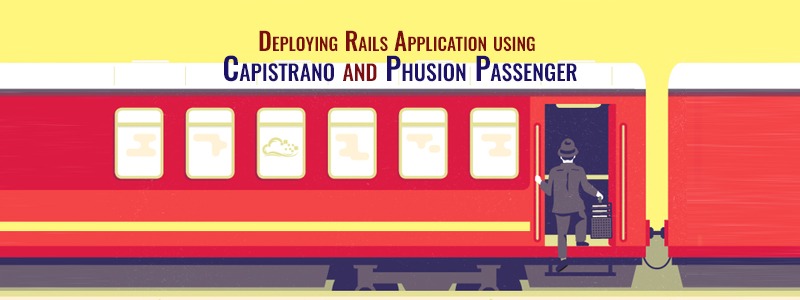As the software development landscape continues to evolve, developers are often faced with the choice of which programming language to adopt for their projects. In 2025, two of the most popular and widely used programming languages, Rubis et Golang (Go), stand out for different reasons. Both have their unique features, ecosystems, and use cases, which make them suitable for different kinds of development. But which one should you choose? Let’s dive into a comparison of Ruby and Golang to help you decide.
Ruby: The Language of Simplicity and Developer Happiness
Rubis has long been known for its elegant syntax and developer-friendly environment. Ruby’s main appeal is its simplicity and the ability to get applications up and running quickly, thanks to the power of the Rubis sur Rails cadre.
Pros of Ruby in 2025
- Ease of Use and Readability: Ruby’s syntax is intuitive and easy to learn, which makes it a great option for beginners and experienced developers alike.
- Rich Ecosystem and Libraries: Ruby on Rails (RoR) continues to be a robust framework for web development. It follows the convention over configuration principle, allowing developers to focus on the logic of the app rather than on intricate configurations.
- Community and Resources: Ruby has an established, supportive community that offers a wealth of tutorials, open-source libraries, and gems that can help you with almost anything.
- Développement rapide: Due to the flexibility of Ruby and the power of Rails, developers can prototype and develop apps quickly.
Cons of Ruby in 2025
- Performance Issues: While Ruby is great for rapid development, it can be slower compared to languages like Golang, especially for resource-intensive tasks.
- Évolutivité: While Ruby on Rails can handle substantial web applications, its performance can degrade with a large number of concurrent requests, which is something to consider for large-scale systems.
- Declining Popularity: The rise of newer frameworks and languages has led to a gradual decline in Ruby’s usage for certain types of applications.
Golang: The Language of Speed and Efficiency
Golang (Go), developed by Google, is designed for high-performance, scalable, and concurrent applications. It excels in situations where performance and concurrency are critical, making it popular for backend services, microservices, and cloud-native applications.
Pros of Golang in 2025
- Superior Performance: Golang is a compiled language that offers faster execution times than Ruby. It is ideal for performance-critical applications, such as web servers, APIs, and high-performance systems.
- Concurrency and Scalability: Go’s goroutines and channels make it exceptionally well-suited for handling multiple tasks concurrently. This makes Golang a favorite for building scalable systems and real-time applications.
- Simplicity and Minimalism: Golang is designed to be simple and minimalistic, offering a straightforward syntax without a lot of the bells and whistles seen in other programming languages.
- Growing Ecosystem: Go has become the go-to language for cloud computing, microservices, and distributed systems. With tools like Kubernetes and Docker, Go is entrenched in modern DevOps and cloud-native development.
Cons of Golang in 2025
- Lack of Generics (Until Recently): Go’s lack of generics has been a significant limitation, but with the release of Go 1.18, this gap is starting to close. However, older codebases might still face this challenge.
- Steeper Learning Curve: While Go is simpler than many languages, it requires developers to adopt a different mindset, particularly in terms of memory management and error handling.
- Limited Libraries Compared to Ruby: Go has a more limited set of libraries and frameworks when compared to Ruby, which means developers might have to write more custom code for certain tasks.
Key Differences: Ruby vs Golang
|
Fonctionnalité |
Rubis |
Golang |
|
Cas d'utilisation |
Web development, startups, prototyping |
High-performance, scalable systems, backend |
|
Performance |
Slower, interpreted language |
Fast, compiled language |
|
Concurrency |
Limited support |
Excellent concurrency (goroutines) |
|
Framework |
Ruby on Rails, Sinatra |
Fewer frameworks (Gin, Echo) |
|
Facilité d'apprentissage |
Very easy, beginner-friendly |
Slightly harder, but simple syntax |
|
Communauté |
Strong, large community |
Growing rapidly, especially in backend systems |
When to Use Ruby?
If you are working on:
- Rapid application development: Ruby on Rails can quickly bring prototypes to life.
- Web applications and APIs: Ruby shines when building full-stack web apps, especially if you need a strong community of tools and resources.
- Startups: When time-to-market is critical, Ruby on Rails is an excellent choice due to its development speed.
When to Use Golang?
Opt for Golang if:
- Performance and scalability are your top priorities, especially for backend services, microservices, or cloud-native applications.
- Concurrency: You need efficient handling of multiple processes or connections simultaneously.
- Building a large-scale distributed system, like real-time messaging, cloud services, or high-performance APIs.
What are the Types of Programming Languages?
Programming languages are categorized based on their level of abstraction, their functionality, and the domain they are designed to serve. Below are the main types:
1. Low-Level Languages
Low-level languages are closer to machine code and are often used for system programming. These languages provide little abstraction from the hardware and offer more control over system resources.
- Machine Language: The most fundamental level of programming, consisting of binary code that the computer’s processor can directly execute.
- Assembly Language: A human-readable representation of machine language that uses mnemonics for instructions.
Example: Assembly, C
2. High-Level Languages
High-level languages abstract away much of the hardware interaction, making them easier to use and more focused on problem-solving. These languages are designed to be easy to read and write, with complex operations hidden from the programmer.
- Procedural Languages: Focus on a sequence of tasks and functions.
- Object-Oriented Languages (OOP): Emphasize objects and classes, promoting reusability and modularity.
- Functional Languages: Treat computation as the evaluation of mathematical functions and avoid changing-state or mutable data.
Examples:
- Procedural: C, Fortran
- OOP: Ruby, Java, Python
- Functional: Haskell, Lisp, Scala
3. Scripting Languages
Scripting languages are high-level languages primarily used for automating tasks and processing tasks like text manipulation, system administration, and web development. They typically don’t require compilation before execution.
Examples: Python, JavaScript, Perl, Ruby
4. Markup and Styling Languages
Markup languages are used to define and manipulate the structure of documents, while styling languages control the presentation. These languages do not contain logic or algorithms but focus on content organization and visual presentation.
- Markup Languages: Focus on defining the structure of content.
- Examples: HTML, XML, JSON
- Styling Languages: Focus on the presentation and layout of content.
- Examples: CSS, SASS, LESS
5. Domain-Specific Languages (DSL)
Domain-specific languages are created for a specific problem domain, and they often offer abstractions tailored to that domain. These languages are not general-purpose and are designed to simplify certain types of programming tasks.
Examples: SQL (for databases), VHDL (hardware description), MATLAB (scientific computing)
6. Declarative Languages
In declarative languages, the programmer specifies what the program should accomplish, rather than how it should be accomplished. These languages are used in fields like database query processing and configuration management.
Examples: SQL, HTML, Prolog
7. Concurrent and Parallel Languages
These languages are designed to handle multiple processes simultaneously. They are used in applications where tasks can be performed independently, such as in multi-core processors or distributed systems.
Examples: Erlang, Go, Rust
8. Logic Programming Languages
Logic programming languages are based on formal logic. Programs are expressed in terms of relations, and computation is performed by logical inference.
Example: Prolog
Each type of language serves different needs, from the low-level, high-performance systems programming to high-level application development, automating tasks, and querying databases. The choice of programming language depends largely on the project’s needs, complexity, and the domain it targets.
Conclusion: Which One to Choose in 2025?
Choosing between Rubis et Golang depends largely on your project requirements and goals. Ruby continues to be an excellent choice for web development with its emphasis on speed and simplicity, especially when paired with Rails. It’s a powerful tool for startups and applications that need to be developed quickly.
On the other hand, Golang is gaining momentum for performance-critical applications and systems that require scalability and efficient concurrency management. As businesses increasingly move toward cloud-native and microservices architectures, Go is becoming the language of choice for backend developers.
Ultimately, your choice in 2025 will depend on the specific needs of your application, the team’s expertise, and whether you value performance or development speed more highly. Leverage Golang development services for high-performance, scalable applications or Services de développement Ruby on Rails for rapid, feature-rich web application development. Both languages have their place in modern development, and understanding their strengths and weaknesses will ensure you make the right decision for your next project.
Questions fréquemment posées
1. What are the main differences between Ruby and Golang in terms of performance?
Ruby, being an interpreted language, tends to be slower than Golang, which is compiled. Golang’s performance is particularly noticeable in systems where high concurrency and speed are essential, such as in microservices or cloud computing. Ruby, while slower, is more focused on rapid development and ease of use, especially when paired with the Ruby on Rails framework for web applications.
2. Which language is better for web development in 2025, Ruby or Golang?
Ruby, especially with Ruby on Rails, is still a leading choice for web development in 2025. It is well-suited for rapid application development, thanks to its rich ecosystem and developer-friendly features. Golang, while more commonly used in backend systems and performance-critical services, is not traditionally used for full-stack web development, making Ruby the better option for web apps unless performance is a priority.
3. Which language is easier to learn, Ruby or Golang?
Ruby is often regarded as one of the easiest programming languages to learn due to its clean and readable syntax. It is a great choice for beginners. Golang, though designed to be simple, has a steeper learning curve compared to Ruby, especially for developers unfamiliar with systems programming concepts like concurrency and memory management.
4. Is Golang more scalable than Ruby for large applications?
Yes, Golang is designed with scalability in mind. Its concurrency model, using goroutines and channels, allows it to handle large volumes of simultaneous tasks efficiently. This makes it ideal for microservices, distributed systems, and other scalable architectures. While Ruby can scale, especially with tools like Rails, it may not perform as efficiently in high-load scenarios compared to Golang.
5. Which language should I choose for my next project in 2025?
If you are building a web application that needs fast development and has a less intense performance requirement, Rubis avec Rubis sur Rails is a great choice. On the other hand, if your project involves high-performance backend services, microservices, or applications where concurrency and speed are critical, Golang would be the better option. Consider your team’s expertise, project requirements, and long-term scalability when making the decision.









